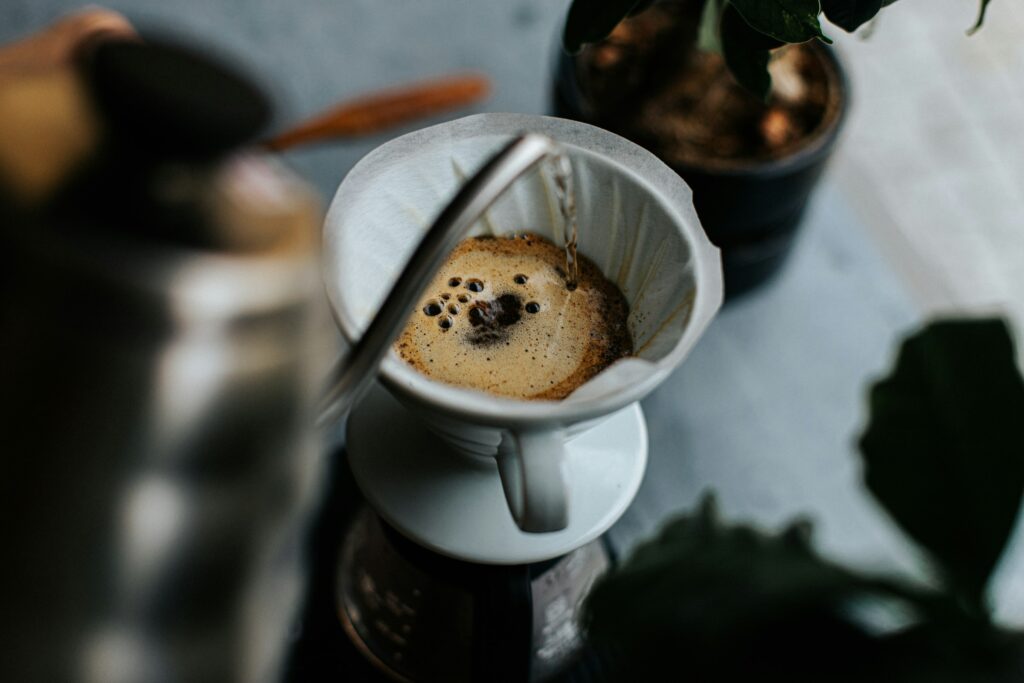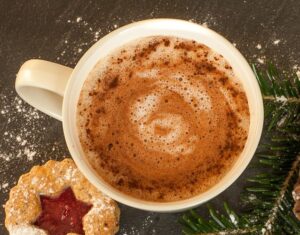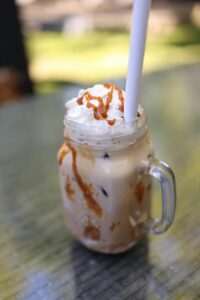Some people swear by the ease of a drip machine. Others won’t give up the ritual of a pour-over. Coffee folks can get pretty passionate about it—almost like arguing over the best pizza topping.
Drip coffee is the everyday workhorse: push a button, walk away, come back to a full pot. Pour-over is more like slow cooking: you control every detail, from the water flow to the bloom.
In this post, we’ll break down the big differences like how each method works, how they taste, what they cost, and when they make sense, so you can pick the one that actually fits your lifestyle.
| Aspect | Drip Coffee ☕ | Pour-Over Coffee ☕ |
|---|---|---|
| Brewing Method | Automated, machine-controlled | Manual, hand-poured |
| Flavor Profile | Balanced but less nuanced | Clean, bright, highlights unique notes |
| Equipment Cost | Ranges from cheap to high-end machines | Affordable tools (dripper, filters, kettle, scale) |
| Convenience | “Set it and forget it,” great for multitasking | Slower, more intentional, requires focus |
| Serving Size | Multiple cups at once, good for groups | 1–2 cups, more personal |
| Best For | Busy mornings, offices, households | Flavor lovers, weekend brews, coffee hobbyists |
What Is Drip Coffee?
Drip coffee is the classic method most people picture when they think of a “coffee maker.” It’s the machine sitting on countless kitchen counters and office break rooms.
You fill it with water, scoop in ground coffee, press a button, and walk away. A few minutes later, you’ve got a pot ready to pour.
It’s designed for simplicity, speed, and producing multiple cups in one go.
How It Works
The process is automatic. The machine heats water to near boiling, then pushes it upward through a small tube. That hot water drips over the coffee grounds sitting in a paper or reusable filter.
Gravity does the rest, pulling the brewed coffee down into the pot. Think of it as a set-it-and-forget-it system—no measuring pours, no hovering with a kettle.
Pros of Drip Coffee
The biggest win is convenience. You can brew several cups at once, making it perfect for households or offices.
Many modern machines come with timers, so you can wake up to fresh coffee without lifting a finger.
Consistency is another plus as you’ll usually get the same result every time, which is reassuring if you just want caffeine without fuss.
Cons of Drip Coffee
The trade-off is control. You don’t decide how water flows, how long it stays in contact with the coffee, or the exact temperature. That lack of precision often means a flatter, less vibrant taste.
If you’re after the delicate notes of a single-origin bean, drip brewing might not do them justice.
And while machines range from budget-friendly to high-end, even the fancy ones can’t quite match the depth of flavor you can achieve with a more hands-on method.
What Is Pour-Over Coffee?
Pour-over coffee is the opposite of “push a button and walk away.” It’s a hands-on brewing method that puts you in the driver’s seat.
Instead of a machine handling the work, you manually pour hot water over ground coffee using a dripper like a Hario V60, Chemex, or Kalita Wave.
It’s often seen as the craft coffee lover’s choice—more art than appliance.
How It Works
The process looks simple but demands care. You place a paper filter in the dripper, add fresh coffee grounds, and slowly pour hot water in a controlled, circular motion.
The water saturates the grounds, extracts flavor, and drips into your mug or carafe below. Every variable matters: water temperature, pouring speed, grind size, and even your wrist movement.
That’s why baristas treat pour-over like a performance, while home brewers often describe it as a calming ritual.
Pros of Pour-Over Coffee
The big draw is customization. You decide how fast to pour, how much water to use, and how long the coffee steeps.
That control lets you highlight unique notes in the beans—bright fruit, smooth chocolate, or even subtle floral tones. For single-origin coffees, pour-over is like putting them under a spotlight.
Many people also enjoy the meditative side of it. Standing over your cup for a few minutes can feel like a mini break from the chaos of the day.
Cons of Pour-Over Coffee
The downside? It takes time and attention. You can’t set it up and walk away because you’re committed to those few minutes of focus.
If your technique slips, your cup can taste too weak or too bitter. And while the gear is affordable, the learning curve can frustrate beginners.
In short, pour-over demands patience and practice, which doesn’t always pair well with a rushed morning routine.
Brewing Method: Automation vs. Control
Drip Coffee = Automated Process
Drip coffee is built for autopilot. You measure the grounds, add water, and let the machine do its thing. It handles the heating, the dripping, and the timing without asking for your input.
For people who just want caffeine waiting in the pot, this is a blessing.
Pour-Over = Every Step Matters
Pour-over flips that script. You’re the one in charge of temperature, pouring pace, and water distribution. Even the angle of your wrist can affect how the coffee extracts.
It’s not complicated, but it does require attention.
Impact on Consistency and User Involvement
Automation means drip machines deliver a similar cup each time, but “similar” doesn’t always mean “exceptional.” You’ll get consistency, but often at the cost of nuance.
Pour-over, on the other hand, rewards precision. When done right, it highlights delicate flavors that a machine tends to blur.
The catch? The quality is in your hands. A distracted pour can lead to a lackluster cup, while a focused one can feel like striking gold.
Flavor Profile Differences
Drip Coffee: Balanced but Less Nuanced
Drip coffee tends to produce a well-rounded cup. It’s smooth, familiar, and gets the job done without fuss.
But because the machine controls water flow and extraction time, subtle flavors often get lost in the shuffle. You’ll taste the coffee, sure, but it won’t always capture the full character of the beans.
Pour-Over: Clean, Bright, and Flavor-Focused
Pour-over, on the other hand, shines when it comes to clarity. By manually controlling the pour, you allow the coffee’s more delicate notes to come forward.
Citrus, berry, floral, chocolate—it all depends on the bean, and pour-over puts those flavors in the spotlight. Many coffee lovers describe it as a “cleaner” cup, where each sip feels crisp and layered.
Single-Origin vs. Blends
This is where the choice really matters. Single-origin beans, which come from one region or farm, often have unique flavor profiles that pour-over highlights beautifully.
It’s the method of choice if you want to taste the subtle differences between, say, an Ethiopian bean and a Colombian one.
Blends, however, are crafted to deliver a balanced flavor no matter how you brew them.
That makes them more forgiving in a drip machine, where the focus is on consistency and comfort over complexity.
Equipment and Cost
Drip Coffee Machines: From Basic to Fancy
Drip coffee makers come in all shapes and price tags. At the low end, you can grab a no-frills machine for the price of a takeout lunch.
On the high end, there are programmable models with timers, built-in grinders, and even smart home integration.
These pricier machines promise more convenience but don’t necessarily guarantee better flavor.
The real appeal is volume and automation—set it, forget it, and enjoy multiple cups without breaking a sweat.
Pour-Over Tools: Simple but Specialized
Pour-over gear looks minimal, but there are a few moving parts.
At its core, you need a dripper (like a V60 or Chemex), paper or metal filters, a gooseneck kettle for controlled pouring, and ideally, a scale to measure your coffee and water.
None of these items are expensive on their own, but together they can add up.
That said, once you buy them, they last a long time, and many people find the small investment worth it for the upgrade in flavor and control.
Long-Term Investment Comparison
With drip coffee, your main costs are the machine itself and ongoing maintenance—replacement filters, occasional descaling, and, eventually, replacing the entire unit when it wears out.
Pour-over requires more hands-on effort but less reliance on expensive hardware. Aside from filters, the gear is mostly one-and-done purchases.
Over time, pour-over can actually be cheaper, especially if you skip the bells and whistles of high-end machines.
Time and Convenience
Drip Coffee: Set It and Forget It
Drip coffee is the ultimate time-saver. You scoop, pour in water, hit a button, and walk away. While you’re brushing your teeth or scrolling through emails, the machine is doing all the work.
By the time you’re ready, a full pot is waiting. For anyone juggling kids, commutes, or chaotic mornings, this is a lifesaver.
Pour-Over: Slower but More Intentional
Pour-over takes the opposite approach. You can’t multitask; you’re standing there, pouring water in careful spirals, watching the bloom, timing each step. It’s not fast, but it’s deliberate.
For some, this is the fun part—it feels like a morning ritual, almost meditative. You’re forced to slow down, which can be oddly refreshing in a world that runs at full speed.
But let’s be honest: if you’re running late, those extra minutes feel like forever.
Busy Mornings vs. Relaxed Weekends
So which method fits when? Drip is your weekday warrior. It gets you out the door with caffeine in hand and minimal fuss.
Pour-over shines on weekends, or on any day when you actually want to savor the process as much as the drink.
Think of it like breakfast: Drip is a bowl of cereal on Monday, pour-over is a homemade pancake stack on Sunday. Both feed you, but one feels more like an experience!
Serving Size and Use Cases
Drip Coffee: Brewing for the Crowd
Drip coffee is built for volume. A standard machine makes anywhere from 4 to 12 cups in one cycle, which is perfect for households, offices, or any situation where multiple people need coffee at once.
It’s the “party pitcher” of coffee brewing—everyone can grab a mug without waiting.
If you’ve got a family of coffee drinkers or a group meeting first thing in the morning, drip coffee takes the crown for efficiency.
Pour-Over: Brewing for One (or Two)
Pour-over shines in smaller, more personal scenarios. Most drippers are designed to brew one cup at a time, maybe two if you push it. That makes it ideal for solo mornings or sharing with a partner.
It feels like a made-to-order drink rather than a big batch. Instead of a pot sitting on the warmer for an hour, you get a fresh cup brewed on the spot.
It’s intimate, almost like the difference between cooking a quick snack for yourself versus running a buffet line.
Which Fits Best?
If you regularly need several cups in quick succession, drip is the logical choice. It’s built for serving a group without slowing anyone down.
Pour-over, on the other hand, fits moments where quality outweighs quantity. It’s about crafting a personal cup, not keeping a team of coworkers caffeinated.
So the real question is: are you brewing for the crowd, or just for you?
Which One Should You Choose?
Drip Coffee: Everyday Ease
Drip coffee is your go-to if you value convenience above all else. It’s fast, consistent, and makes enough to keep you and a few others running.
Perfect for busy mornings, offices, or anyone who doesn’t want to fuss with technique before they’re fully awake.
If you see coffee primarily as fuel to start the day, a drip machine will never let you down.
Pour-Over: For the Flavor Enthusiast
Pour-over is for people who enjoy the process as much as the result. It’s slower, but it rewards patience with bright, clean flavors you can’t always get from a machine.
This method suits coffee hobbyists, weekend brewers, or anyone who treats their morning cup as a small ritual.
If coffee is more than just caffeine for you—if it’s an experience—pour-over is where you’ll feel most at home.
A Hybrid Approach
Of course, you don’t have to pledge allegiance to one camp. Many people use a drip during the week for speed, then switch to pour-over on weekends when there’s time to linger.
Drip keeps you efficient, pour-over keeps you inspired. Having both in your coffee corner gives you the best of both worlds.
Final Words
Drip coffee gives you speed and quantity. Pour-over gives you control and flavor. One is practical, the other is personal.
The best way to know which you prefer? Test them side by side. Brew the same beans with both methods and see which cup makes you smile.
You might even find there’s room in your life for both!
FAQs
Can you use the same coffee beans for both methods?
Yes, absolutely. Any coffee bean can work in either method. That said, pour-over tends to highlight subtle flavors, so single-origin beans often shine more.
Blends usually taste just fine in drip machines, where balance matters more than nuance.
Is pour-over coffee healthier than drip coffee?
Not really, because nutritionally, they’re nearly the same. The main difference comes down to filters.
Paper filters (common in pour-over) can trap more oils, which slightly lowers cholesterol-related compounds. But for most people, the difference is minimal.
Do you need special filters for pour-over?
Yes, you’ll need filters designed for your dripper (like V60, Chemex, or Kalita).
They’re usually inexpensive and easy to find. Some people also use reusable metal filters, which cut down waste and let more oils into the cup, giving a richer body.
Which method uses more coffee grounds?
It depends on your recipe and taste preference. Pour-over often uses a bit more coffee to achieve a bold, clean cup.
Drip machines can stretch grounds further since they’re brewing larger batches, but the flavor may not be as strong.
Can you make cold brew with a drip or pour-over?
Not really. Cold brew is its own method—steeping coffee grounds in cold water for many hours.
Drip and pour-over are hot water brewing methods, so they don’t work the same way. You can brew hot and then chill it, but that’s technically iced coffee, not cold brew.



